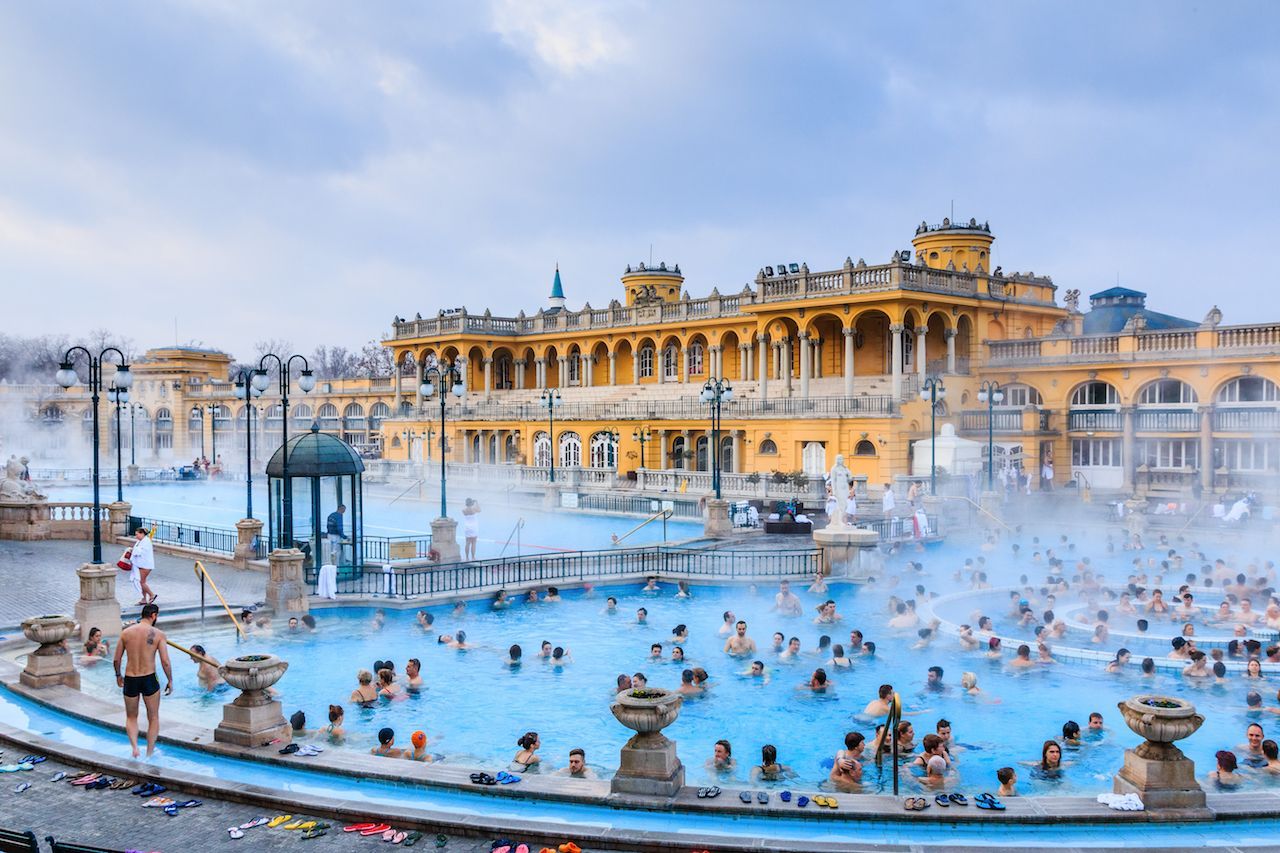Budapest’s thermal baths offer a unique blend of relaxation, history, and culture. Known as the “City of Spas,” Budapest is famous for its numerous thermal baths and natural hot springs. These baths have been an integral part of the city’s culture and history for centuries, and they provide an opportunity for visitors to unwind and immerse themselves in the healing waters while exploring the past. Let’s take a deep dive into the world of Budapest’s thermal baths:
- Rudas Thermal Bath: This bath, dating back to the 16th century during the time of Ottoman rule, is a true historical gem. The Rudas Bath features an octagonal pool beneath a stunning dome with small, star-shaped openings that allow beams of sunlight to filter through. The Turkish influence is evident in the architecture, and visitors can soak in various thermal pools of different temperatures. Don’t miss the rooftop pool, which offers panoramic views of Budapest and the Danube River.
- Széchenyi Thermal Bath: One of the largest and most famous thermal baths in Budapest, Széchenyi is located in the City Park. It boasts an impressive neo-Baroque architectural style and a massive complex of indoor and outdoor pools. The water in Széchenyi is rich in minerals and believed to have healing properties. The outdoor pools are particularly popular, especially during the colder months when visitors can enjoy warm waters amidst steam rising into the crisp air.
- Gellért Thermal Bath: Located within the famous Gellért Hotel, this bath is renowned for its Art Nouveau architecture. The Gellért Bath features a beautifully decorated main hall with colorful mosaics, stained glass windows, and sculptures. Its thermal waters are said to be beneficial for various ailments, and visitors can also enjoy a range of wellness services such as massages and saunas.
- Király Thermal Bath: Another Turkish-era bath, Király Thermal Bath, offers a more intimate and less touristy experience. The octagonal pool and the Ottoman-style architecture create a serene atmosphere. The bathhouse has separate sections for men and women and maintains a sense of historical authenticity.
- Dandár Thermal Bath: While not as well-known as some of the others, Dandár Thermal Bath is a local favorite. It offers a more relaxed and authentic experience away from the tourist crowds. The thermal water here is known for its healing properties, and the bathhouse provides a tranquil environment to unwind.
- Historical Significance: Many of these thermal baths have witnessed significant historical events over the centuries. For instance, during the Turkish occupation, Budapest’s thermal baths served as gathering places for the Ottoman elite. Later, in the 19th century, they played a vital role in the city’s social life and were frequented by royalty and intellectuals.
- Modern Amenities: While preserving their historical charm, Budapest’s thermal baths have also adapted to modern needs. Many of them offer a range of wellness and spa services, including massages, saunas, and steam rooms, ensuring a rejuvenating experience.
- Cultural Experience: Visiting Budapest’s thermal baths isn’t just about relaxation; it’s also a cultural experience. You’ll find locals and tourists alike enjoying the healing waters, playing chess on submerged boards, and socializing in a unique communal setting.
In summary, Budapest’s thermal baths provide a captivating blend of relaxation, history, and culture. They are not just places to soak and unwind but also windows into the city’s rich past and traditions. Whether you’re seeking therapeutic benefits or simply want to immerse yourself in the atmosphere of these unique spaces, a visit to Budapest’s thermal baths is an unforgettable experience.


